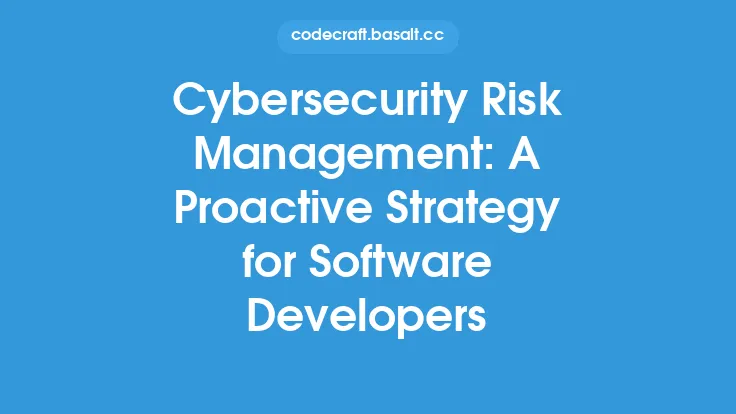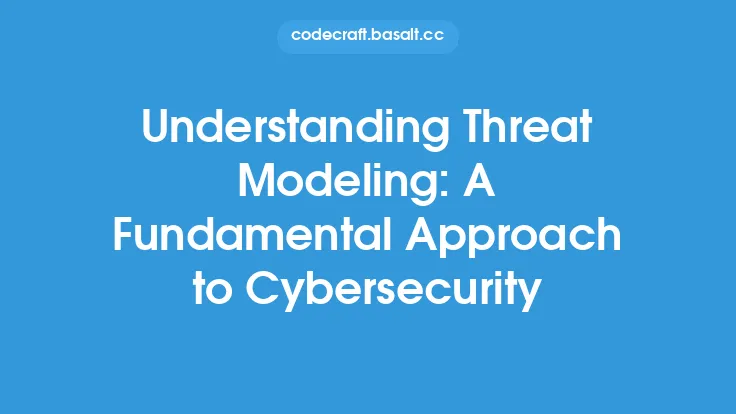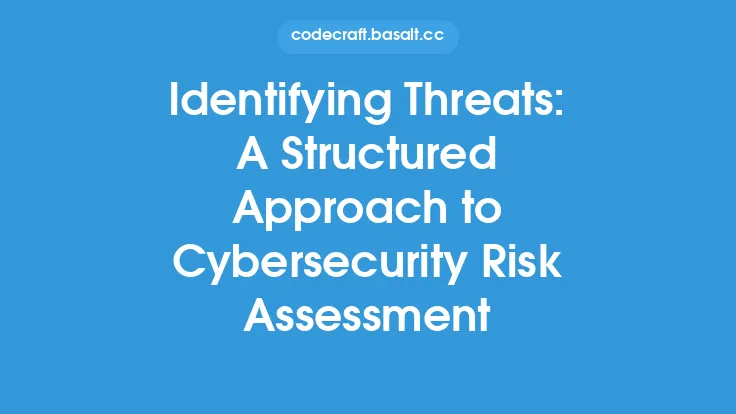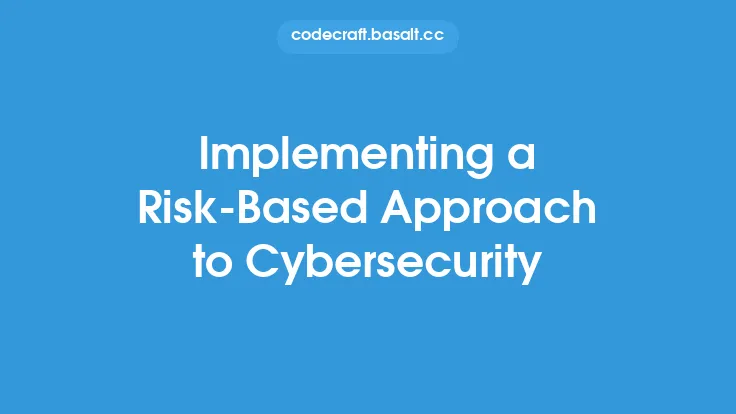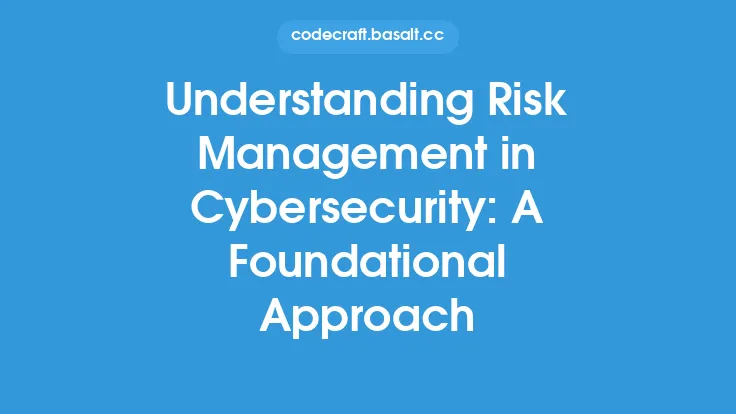Cybersecurity is a constantly evolving field, with new threats and vulnerabilities emerging every day. To stay ahead of these threats, organizations need to adopt a proactive approach to risk management. One key component of this approach is cybersecurity threat modeling. Threat modeling is a systematic process that helps organizations identify, analyze, and prioritize potential security threats. By understanding the threats they face, organizations can take steps to mitigate them and reduce the risk of a security breach.
Introduction to Threat Modeling
Threat modeling is a critical component of any cybersecurity strategy. It involves identifying the assets that need to be protected, the threats that could affect those assets, and the vulnerabilities that could be exploited by those threats. Threat modeling is not a one-time process, but rather an ongoing effort that requires continuous monitoring and updating. As new threats and vulnerabilities emerge, organizations need to reassess their threat models and make adjustments as needed. Effective threat modeling requires a deep understanding of the organization's assets, its network and system architecture, and the potential threats it faces.
The Benefits of Threat Modeling
Threat modeling offers a number of benefits to organizations. By identifying potential security threats, organizations can take steps to mitigate them and reduce the risk of a security breach. This can help to protect sensitive data, prevent financial losses, and maintain customer trust. Threat modeling can also help organizations to prioritize their security efforts, focusing on the most critical vulnerabilities and threats. Additionally, threat modeling can help organizations to comply with regulatory requirements and industry standards, such as PCI-DSS and HIPAA. By demonstrating a proactive approach to security, organizations can also improve their reputation and reduce the risk of legal and regulatory action.
The Threat Modeling Process
The threat modeling process typically involves several steps. The first step is to identify the assets that need to be protected. This could include sensitive data, network devices, and system components. The next step is to identify the threats that could affect those assets. This could include external threats, such as hackers and malware, as well as internal threats, such as insider attacks and accidental data disclosure. The third step is to identify the vulnerabilities that could be exploited by those threats. This could include weaknesses in network protocols, software bugs, and configuration errors. The final step is to prioritize the threats and vulnerabilities, based on their likelihood and potential impact.
Threat Modeling Techniques
There are several threat modeling techniques that organizations can use. One common technique is to use a threat modeling framework, such as STRIDE or PASTA. These frameworks provide a structured approach to threat modeling, helping organizations to identify and prioritize potential security threats. Another technique is to use attack trees, which provide a visual representation of the potential attack paths that an attacker could take. Organizations can also use threat modeling tools, such as threat modeling software and simulation tools, to help identify and prioritize potential security threats.
Integrating Threat Modeling into the Organization
Threat modeling should be an integral part of an organization's overall cybersecurity strategy. It should be integrated into the organization's security policies and procedures, and should be regularly reviewed and updated. Organizations should also ensure that threat modeling is a collaborative effort, involving input from multiple stakeholders, including security teams, development teams, and business leaders. By integrating threat modeling into the organization, organizations can ensure that they are taking a proactive approach to security, and that they are prepared to respond to emerging threats and vulnerabilities.
Common Challenges and Pitfalls
Despite the benefits of threat modeling, there are several common challenges and pitfalls that organizations may encounter. One common challenge is the lack of resources and expertise. Threat modeling requires a deep understanding of security threats and vulnerabilities, as well as the organization's network and system architecture. Organizations may need to invest in training and hiring security professionals with expertise in threat modeling. Another challenge is the complexity of the threat modeling process. Threat modeling involves multiple steps and requires input from multiple stakeholders. Organizations may need to use threat modeling frameworks and tools to help simplify the process. Additionally, organizations may encounter resistance to threat modeling from stakeholders who do not understand its importance or who are concerned about the potential costs and resource requirements.
Best Practices for Effective Threat Modeling
To get the most out of threat modeling, organizations should follow several best practices. First, organizations should ensure that threat modeling is a continuous process, with regular reviews and updates. This will help to ensure that the organization is prepared to respond to emerging threats and vulnerabilities. Second, organizations should use a structured approach to threat modeling, such as a threat modeling framework or attack trees. This will help to ensure that the organization is identifying and prioritizing potential security threats in a systematic and thorough way. Third, organizations should ensure that threat modeling is a collaborative effort, involving input from multiple stakeholders. This will help to ensure that the organization is taking a comprehensive and proactive approach to security. Finally, organizations should ensure that threat modeling is integrated into the organization's overall cybersecurity strategy, and that it is regularly reviewed and updated.
Conclusion
Cybersecurity threat modeling is a critical component of any cybersecurity strategy. By identifying and prioritizing potential security threats, organizations can take steps to mitigate them and reduce the risk of a security breach. Threat modeling offers a number of benefits, including improved security, reduced risk, and compliance with regulatory requirements. To get the most out of threat modeling, organizations should follow several best practices, including using a structured approach, ensuring that threat modeling is a continuous process, and integrating it into the organization's overall cybersecurity strategy. By adopting a proactive approach to security, organizations can stay ahead of emerging threats and vulnerabilities, and protect their sensitive data and assets.
